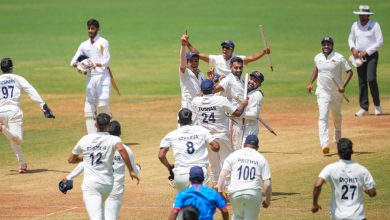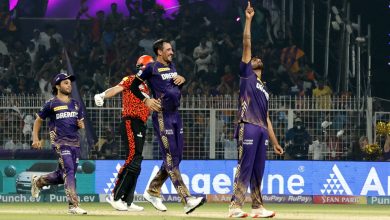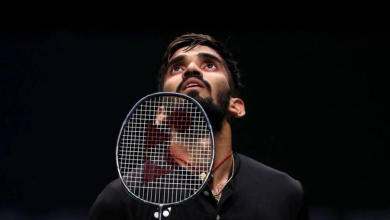Mithali-led India promises time-shift in women’s cricket

Six months ago Smriti Mandhana lay on a Melbourne hospital’s operation table, hoping the surgeons won’t cut open her World Cup dream. Two knocks into the sojourn, the India opener had incited a 10-year-old back home to get her jersey customized with ‘Mandhana’ written on the back of it.
For Jhulan Goswami, the oldest member of this side, life came full circle when she came face to face with Pakistan’s Kainat Imtiaz. The rookie pacer’s Instagram post on her ‘role model’ Goswami went viral a day after the Indo-Pak clash. Imtiaz shared how as a ball-girl during the 2005 Asia Cup staged in Karachi, she got inspired by the tall, fiery Indian pacer, only to pick up a ball and bowl fast for her country. Goswami, who herself got sucked into the sport awed by Belinda Clark’s victory lap at the Eden Gardens in 1997, has now passed on the baton.
Mithali Raj’s Twitter bio reads: ‘I dream. I work hard. I grind, until I own it.’ Cricket was an acquired taste for a nine-year-old lazy girl pushed into the sport by a disciplinarian father. As a 14-year-old Raj was overlooked for a World Cup spot despite bucket-loads of talent; laid low by typhoid when her chance finally came in 2000; made up for it by leading India to its first-ever final in 2005 and a dozen years later became the only captain – male or female – to repeat that feat. Now as her storied career is in its final few laps, Raj has raced miles ahead of her peers, rewriting several records in indelible ink.
Complacency creeped in after a half-century on debut in Derby in 2011, and that saw Veda Krishnamurthy left out of the 2013 World Cup squad, and three years as a whole. Six years later, returning to the same venue, she made amends by playing the finisher’s role to the hilt, batting New Zealand out of a virtual quarterfinal.
A few hundred saw her as Harmanpreet Kaur mercilessly hit sixes at will in her maiden WBBL stint, last year. Few thousands were tuned in when she pulled off a Dhoni-esque six-off-penultimate-ball chase in the World Cup Qualifier, in February. But when eyeballs from at least three countries were on her, in a high-octane World Cup semifinal against defending champions Australia, Harmanpreet batted like a woman possessed. There will rarely be a better advertisement of a spectacle that women’s cricket can be.
For a then 17-year-old Deepti Sharma, a dream came true when she donned national colours to play alongside her idol Mithali Raj. A little over two years down the line, when the World Cup glory seemed to be slowly slipping away, wicket by wicket, an expectant captain’s eyes were affixed on this teenager to pull off a miracle.
A World Cup final is a stuff of dreams, really, no matter which corner of the cricketing globe you come from. For it to be staged at the sacrosanct Lord’s and have a sell-out crowd screaming their lungs out, only lifts the experience to a whole new level. To alter the course of history by holding the coveted trophy aloft is an emotion inexpressible. Of course, that’s not how it panned out for India. They faltered at the final step – peaked at just the right time and flunked at the most inappropriate one. But, on Sunday, 15 lives changed irrevocably at the Home of Cricket.
It’s hard not to romanticise the unfathomable statement this bunch has made just by making it to the final, and the far-reaching consequences it will have. Sure this is going to pave way for a paradigm shift. Women’s cricket may never be seen the same way in India, perhaps even globally. There will be rewards in cash and kind, for months to follow, and maybe years later, too. More eyeballs, lucrative job promotions, sponsorship deals, maybe even an IPL of their own. This team has possibly spurred on a metamorphosis that not many saw coming a month ago. But let this moment belong solely to those who will now be hailed as the torch-bearers of a new era in Indian women’s cricket.
Raj was a picture of absolute calm even in the immediate aftermath of her naive troops squandering possibly her best chance of laying hands on that elusive trophy. There was no remorse – not at the presentation ceremony, not in the media meet. The others shouldn’t have felt any, either. And even if there was any fire raging within her, Raj did remarkably well to mask it behind a graceful smile and encouraging words for her team, like a true leader. Her remarks will act as just the balm those distraught hearts need to pick themselves up and celebrate the ride that has been this World Cup campaign.
This is the most resilient an Indian women’s team has been in a long time. Irrespective of the colour of medal in their hand, they have carved out a piece of history for themselves.
The rest, too, will forget those nine runs. Or on second thoughts, maybe not. But they’ll learn to forgive themselves once it all sinks in.







